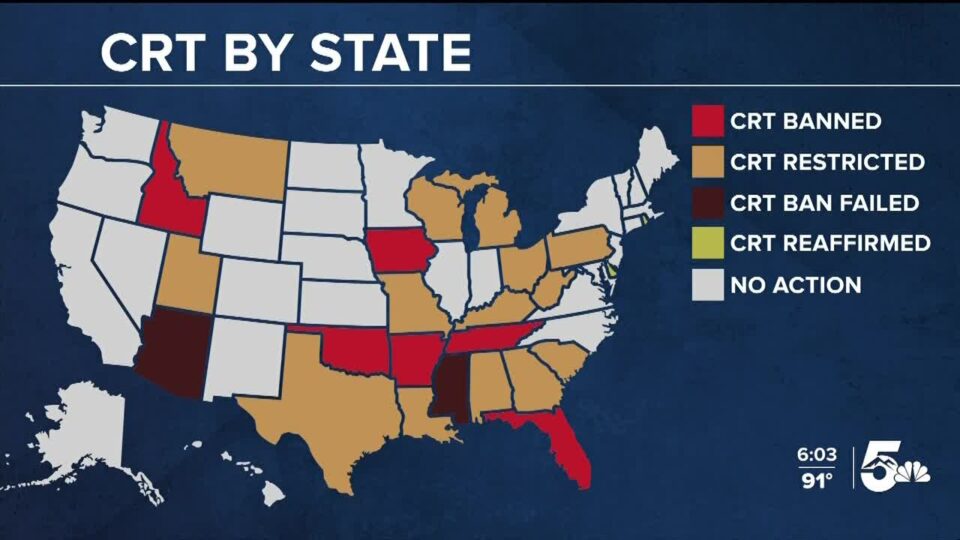Anti-‘Wokeness’ Joins ‘CRT’ as Code Language
. . . Language Continues to Be a Battleground
Psychologists Group Apologizes for Racist Past
No Black Women Win Lorraine Branham Scholarships
Groups of Color to Boost Investigative Journalists
Western Media Dominate COP26 Press Contingent
. . . China Threatening African Livelihoods
Nonprofit Newsroom Planned in Cleveland, Hiring 25
Prison Staff Shortages Leave Stabbings Undetected
Reporters Verify Killing of 1,000 in El Salvador
Short Takes: Danny Fenster; Patsy Loris; Kristen Aguirre; late racist Maryland editor; “a Black man did it.”
Nov. 13 additions:
Harvard Crimson’s first Hispanic editor; rescue of San Antonio student newspaper; a win for portraits of Australia’s Indigenous; Denver Post; Ozy Media; Huel Perkins; University of North Carolina’s Knight chair; Tamron Hall; right to record police actions; Don Lemon vs. Megyn Kelly; NABJ-NAHJ convention chairs; how justice failed again in Mississippi; Fresno’s education diversity program; Byron Allen and Tegna, McDonald’s; Jay Williams;
Vox.com’s new approach to diversity coverage; why Boston anchor switched to braids; Revolt’s streaming app; Adaora Udoji; Kim Godwin’s return to FAMU; Alberto B. Mendoza and sexual orientation; documenting Pakistani-American communities; Jazmin Aguilera; West Virginia’s Black newspaper; investigating reporters in U.S. from Spanish-language outlets; harassment of Nigerian journalist who covered mass killing by police; reporting on death of South Africa’s F.W. de Klerk.
Support Journal-isms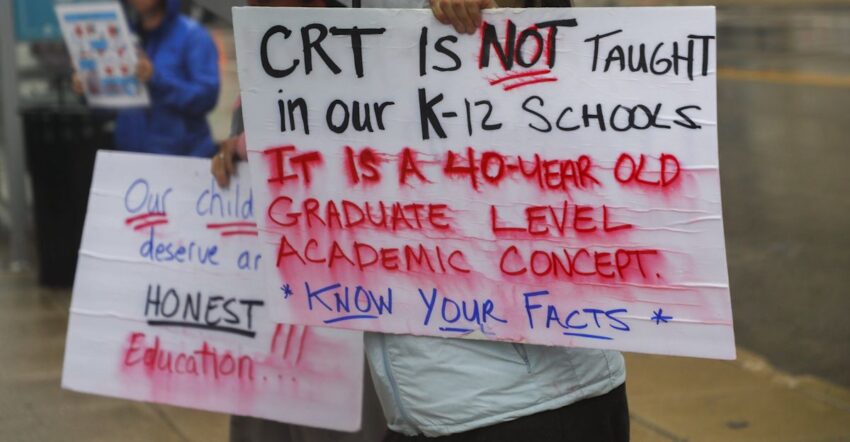
Anti-‘Wokeness’ Joins ‘CRT’ as Code Language
The Atlantic’s Jemele Hill framed the issue this way on Twitter: “White folks in 2020: How can we be better allies and help combat systemic racism? Teach us! White folks in 2021: Stop talking about racism. Your ‘wokeness’ is alienating everybody and causing us to lose elections. Chile, I can’t keep up.”
On public radio’s “On Point” this week, two talking heads debated whether the Democrats’ loss of the Virginia governor’s race was an issue of class or race.
The words “woke” and “wokeness” are being turned into pejoratives. James Carville, the Democratic Party strategist, used his post-election airtime on the “PBS Newshour” to denounce “stupid wokeness” as a reason for Democratic losses. Batya Ungar-Sargon, a deputy opinion editor at Newsweek, has a new book, “Bad News: How Woke Media Is Undermining Democracy,” and appeared Sunday on CNN’s “Reliable Sources.”
The analysis of last week’s Election Day outcomes has become the latest battle to define how much race plays a role in our politics and society. Journalists of color are not always a part of the discussion, but when they are, most are doing their best to keep the narrative on point.
The election hadn’t even taken place yet when Janice Gassam Asare, a diversity consultant, answered for Forbes the perennial question “Why Does Everything Have To Be About Race?“
“Well, for one, race affects every aspect of our lives. Racialized communities are more likely to live in food [deserts], polluted areas, and have lower-quality healthcare,” Asare wrote on Oct. 28. “What neighborhood you live in and what school your child goes to are influenced by race. K-12 schools, for example, with higher populations of Black and Latino students are more likely to be underfunded.
“Race impacts likelihood to be stopped by police, graduation rates, salary, and opportunities. Racism is embedded into every facet and crevice of America. Rather than questioning why racialized individuals ‘make everything about race,’ we should instead be interrogating how these gross inequities are able to continue.”
Hmmm. So either the whole country is pejoratively “woke”, or political pundits are actually socially conservative and out of touch with the American people. https://t.co/MDYz0BCBhR
— Ida Bae Wells (@nhannahjones) November 9, 2021
The victorious Republican Glenn Youngkin campaigned with just the opposite point of view. “We will not teach our children to view everything through a lens of race,” he said. “We will ban critical race theory from our school system on Day One,” using the phrase that has seemingly become a catch-all for discussions of race or inclusion in the curriculum, even if the actual critical race theory is taught primarily in law schools.
He “delivered fear with a smile,” Charles M. Blow wrote in The New York Times.
Youngkin was consistent with Republican views. The Pew Research Center, in a nuanced survey of the beliefs of members of both parties, concluded Tuesday, “Racial injustice remains a dividing line in U.S. politics. Perhaps no issue is more divisive than racial injustice in the U.S.”
To be sure, Democrat Terry McAuliffe lost the Virginia gubernatorial election to Youngkin for multiple reasons — ineffective messaging, voters’ COVID fatigue, impatience with President Biden’s legislative progress and perceived Democratic bickering among them.
But while analysts have pointed out the outpouring by rural whites to Youngkin’s message of white grievance, most did not note that that message did not resonate with people of color, who were not included in the “everyone” supposedly fed up with “wokeness.”
According to exit polls, Virginia whites favored Youngkin, 62 percent to 38 percent for McAullife; Blacks, McAullife, 86 percent to 13 percent for Youngkin; Hispanic/Latino, 66 percent McAullife to 32 percent for Youngkin; and Asians, 67 percent McAullife to 33 percent for Youngkin.
An Associated Press-NORC survey, the basis for this Fox News Voter Analysis, found that the GOP made gains with Latino voters, yet Latinos still went for McAuliffe in that survey as well, 55 percent vs. 44 percent for Youngkin. The Republican businessman also drew more Black votes that Donald Trump did last year in Trump’s presidential race, but still, the figure was paltry.
And yet Carville declared, “Wokeness is a problem and everyone knows it. It’s hard to talk to anybody today — and I talk to lots of people in the Democratic Party — who doesn’t say this. But they don’t want to say it out loud.”
It was mostly left to Black journalists such as Errin Haines of The 19th to differentiate between “everyone” and “white voters.”
Eugene Daniels, a Black journalist writing for Politico about the ongoing student protest at Howard University, noted that any Black frustration with Democrats is because Black voters feel the party is not doing enough for them, not too much.
Haines said on PBS’ “Washington Week,” “Critical race theory is the big lie of 2021, and the modern-day Southern strategy that is appealing to white voters (video). Education is the 2020 version of economic grievance, you know, that code buzzword from 2016.”
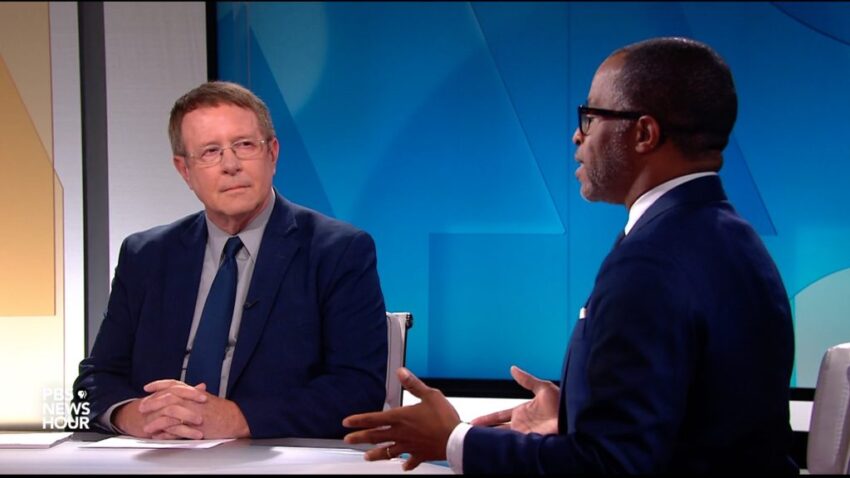
The difference was shown more starkly on the “PBS NewsHour,” when Jonathan Capehart, a Black journalist, told white conservative Gary Abernathy, substituting for David Brooks in their weekly face-off, “it’s not wokeness to want to be treated fairly by the police. (video) It’s not wokeness to want law enforcement to not view you instantly as a criminal, instantly as a bad guy. It’s not wokeness to demand that our nation’s history be taught and reflected accurately. That’s not wokeness.
“That’s at a minimum, it’s asking for dignity and respect. And so for someone, a Democratic strategist like James Carville, to say those things basically to the base of the Democratic Party, is really unfortunate, because I think we can talk about these issues of injustice and talk about how to move the country forward together. These don’t have to be two separate conversations.”
Abernathy said later in the exchange that he agreed with much of what Capehart said, but that, “There’s a lot of emphasis on white people need to feel a certain amount of guilt over this. And we need to get past that.”
Capehart replied, “I’m not asking for guilt, but I do think white people have to get over the feeling villainized just even when the word ‘race’ is used in a sentence. That’s all.”
Syndicated Miami Herald columnist Leonard Pitts Jr. responded to the “guilt” sentiment by writing, “Not to idealize young people, who have a nasty habit of becoming adults, but I suspect they have no need or desire of being treated like hothouse flowers. I bet the kids are, indeed, alright. It’s the grownups we have to worry about.”
Meanwhile, the Native Sun News in Rapid City, S.D., editorialized this week about the revelations of mistreatment of Native Americans sent to abusive boarding schools. “We believe that the government and the churches should pay any living survivor of the boarding schools $100,000 for each year they spent at these schools. From day one at the boarding schools the children were taught that their traditional religions were heathen, that their Native language was no longer acceptable, and that everything about their cultural and traditional lives were wrong. . . “
And in Detroit, more than 80 percent of residents who cast ballots in the general election voted yes to a proposal to form a commission to recommend housing and economic development programs. “Detroit now joins other U.S. cities that are mulling some form of repayment to descendants of African slaves,” the Associated Press reported.
“NewsHour” host Judy Woodruff told Capehart and Abernathy that the show would have to return to their unresolved discussion the following Friday.
- Perry Bacon Jr., Washington Post: An abnormal Republican Party was treated normally by voters in New Jersey and Virginia
- Perry Bacon Jr., Washington Post: Have Democrats reached the limits of White appeasement politics?
- Thomas Beaumont, Aaron Morrison and Will Weissert, Associated Press: After Virginia, GOP amplifies debate over race and education (Nov. 5)
- Black Women Unmuted: ELECTION 2021
- Charles M. Blow, New York Times: White Racial Anxiety Strikes Again (Nov. 3)
- Jamelle Bouie, New York Times: What ‘Structural Racism’ Really Means
- Jamelle Bouie, New York Times: In Virginia’s Culture Wars, One Battle Has Already Been Lost (Oct. 30)
- James Michael Brodie, Chester (Vt.) Telegraph: Critical Race Theory is American history (Oct. 11)
- Stacy M. Brown, National Newspaper Publishers Association: The 2021 Elections Proved Real the Connection Republicans are Making with Black Voters
- Lauren Burke, WREJ-AM, Richmond, Va.: WREJ radio host Gary Flowers and WRVA host John Reid speak on “political smear” on Lt. Gov. Justin Fairfax on Election Night (Nov. 2)
- Jonathan Capehart, Washington Post: Black people, save the republic by saving Virginia — again (Oct. 30)
- Ron Charles, Washington Post: In the Va. governor’s race, ‘Beloved’ is reduced to its most explicit parts. That’s obscene. (Oct. 27)
- Marvin Dunn, Miami Herald: We should teach critical race theory. That includes Miami’s history of lynchings
- Editorial, News & Observer, Raleigh, N.C.: NC’s new maps may be ‘race blind,’ but they still hurt minority voters (Oct. 28)
- Paul Farhi, Washington Post: How the media missed a New Jersey senate candidate’s racist social media posts — until he’d already won.
- Renée Graham, Boston Globe: When they vote for Republicans, white women generally are sustaining white supremacy.
- Emil Guillermo, Asian American Defense and Education Fund: Michelle Wu, Aftab Pureval, and Bruce Harrell drive Asian American hopes for our democracy (Nov. 3)
- Molly Hennessy-Fiske, Los Angeles Times: A ‘war on books’? Conservatives push for audits of school libraries
- Astead W. Herndon, New York Times: Black Voters in Virginia Refuse to Be Blamed for a Major Democratic Defeat
- Heather Hollingsworth and Thomas Beaumont, Associated Press: Culture war fight finds mixed success in school board races
- Hillel Italie, Associated Press: Prize-winning 1619 Project now coming out in book form (Nov. 12)
- Sonny Messiah Jiles, Houston Defender: The Return of Jim Crow is Pending
- Jonathan M. Katz, The Racket: The far right’s secret weapon: Have some extreme reactionism you need to sell? Call the politics desk of the New York Times. (Nov. 4)
- Julianne Malveaux, National Newspaper Publishers Association: Why Won’t Democrats Fight?
- D. Kevin McNeir, Washington Informer: Books Like ‘Beloved’ Reveal the Ugly Truth About America — And the Truth Will Set Us Free (Nov. 3)
- John McWhorter, New York Times: If It’s Not Critical Race Theory, It’s Critical Race Theory-lite
- Chris Megerian, Melanie Mason, Erin B. Logan, Los Angeles Times: Democrats decry GOP’s focus on critical race theory as a racist dog whistle. What’s their next move?
- Bennett Minton, Washington Post: The lies our textbooks told my generation of Virginians about slavery
- Tony Norman, Pittsburgh Post-Gazette: Gainey found a way to overcome the barriers that blocked others
- Molly Osberg, New Republic: Can Voters Even Dismantle the Police? (Nov. 3)
- Jeneé Osterheldt, Boston Globe: The Questions featuring Michelle Wu (Nov. 3)
- Clarence Page, Chicago Tribune: For Democrats, being ‘anti-Trump’ isn’t enough
- Barbara Rodriguez and Amanda Becker, the 19th: What Republican wins in Virginia could mean for state — and maybe national — politics
- Jennifer Schuessler, New York Times: Bans on Critical Race Theory Threaten Free Speech, Advocacy Group Says
- Jake Silverstein, New York Times: The 1619 Project and the Long Battle Over U.S. History
- Will Sutton, NOLA.com: Some elections were wins for African Americans, Asian Americans, women – and Democrats
- Akemi Tamanaha, Asam News: GOP Leader Caught Calling Indian Am Candidate a ‘Sand N****r,’ Resigns
- Adrian Walker, Boston Globe: Wu prepares to write a new chapter in Boston’s story (Nov. 2)
. . . Language Continues to Be a Battleground
“Americans have always wrestled with language when it comes to describing race, with phrases and vocabulary changing to meet the struggles and values of the moment,” Amy Harmon wrote Nov. 1 for The New York Times. “But especially in the wake of protests for social justice in the summer of 2020, there is a heightened attention to this language, say scholars and activists, as some on the left try to advance changes in the culture through words. . . .”
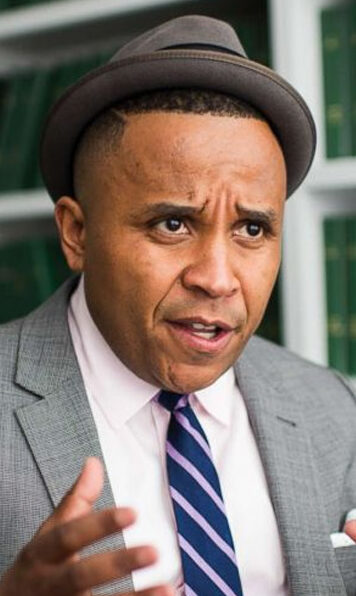 Harmon also wrote, “Unsurprisingly, the language itself has become contested, especially by conservatives who have leveraged discomfort with the new vocabulary to energize their base of white voters, referring to it as ‘wokespeak.’ One conservative think tank circulated a list of words — including ‘microaggressions’ and ‘Black Lives Matter’ — that it said could alert parents that what has been labeled ‘Critical Race Theory’ is being taught in their children’s schools.
Harmon also wrote, “Unsurprisingly, the language itself has become contested, especially by conservatives who have leveraged discomfort with the new vocabulary to energize their base of white voters, referring to it as ‘wokespeak.’ One conservative think tank circulated a list of words — including ‘microaggressions’ and ‘Black Lives Matter’ — that it said could alert parents that what has been labeled ‘Critical Race Theory’ is being taught in their children’s schools.
“The new language extends beyond race, adding phrases and introducing ideas that are new to many Americans. Gender-neutral terms like ‘Latinx,’ for people of Latin American descent, ‘they/them’ pronouns that refer to a single person, and ‘birthing parent’ or ‘pregnant people’ instead of ‘mother,’ to be inclusive of trans people, are also gaining traction. . . .
“Some activists defend the focus on language, saying that the way people use words is not mere symbolism but is necessary to achieving justice.
“ ‘Saying something like, “Black people are less likely to get a loan from the bank,” instead of saying, “Banks are less likely to give loans to Black people,” might feel like it’s just me wording it differently,’ Rashad Robinson (pictured), president of the racial justice organization Color of Change, said. ‘But “Black people are less likely to get a loan from the bank” makes people ask themselves, “What’s wrong with Black people? Let’s get them financial literacy programs.” The other way is saying, “What’s wrong with the banks?” ‘ “
- Nicole Acevedo and Isa Gutierrez, NBC News: Latinos own and disown ‘Hispanic’ in journey to harness identity (Sept. 16, updated Sept 17)
- Jon Allsop, Columbia Journalism Review: ‘Fully vaccinated’ and the other shifting sands of pandemic language (Oct. 27)
- NPR public editor, with Poynter’s Kelly McBride: Language (collection of columns)
- Sakshi Venkatraman, NBC News: Brown, Desi, South Asian: Diaspora reflects on the terms that represent, erase them (Oct. 6)

Psychologists Group Apologizes for Racist Past
“The American Psychological Association issued an apology to people of color on Friday for its role in perpetuating systemic racism and discrimination in the U.S.,” Kynala Phillips reported Nov. 3 for NBC BLK.
The organization has 122,000 members.
“ ‘For the first time, APA and American psychology are systematically and intentionally examining, acknowledging and charting a path forward to address their roles in perpetuating racism,’ APA President Jennifer F. Kelly said in a statement.
“The association called past attempts to apologize for its responsibility in upholding racism ‘unsuccessful.’
“The resolution was adopted by APA’s legislative body, which is made up of its board of directors, APA members representing various states and members who represent ethnic psychological associations. . . .”
Phillips also wrote, “The resolution acknowledged that the origins of the discipline are rooted in ‘oppressive psychological science to protect Whiteness, White people and White epistemologies’ and that in many ways the field was complacent in the exploitation of people of color.
“The professional association was founded in 1892 with the goal of advancing psychology as a science, but in its efforts to expand the field, it was also complicit in the denigration of communities of color, the resolution said.
“To address this, the apology chronicled the association’s nearly 130-year history with racism, starting with its promotion of eugenics. . . .”
- American Psychological Association: Apology to People of Color for APA’s Role in Promoting, Perpetuating, and Failing to Challenge Racism, Racial Discrimination, and Human Hierarchy in U.S.
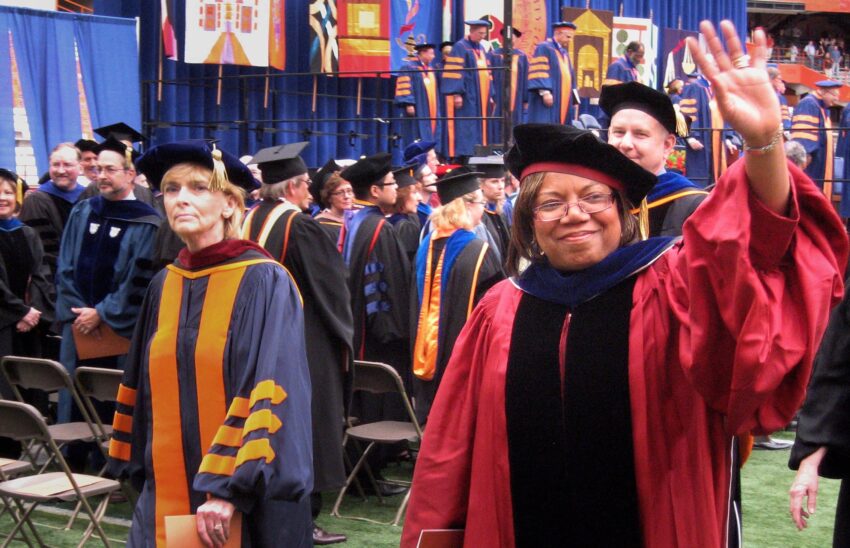
No Black Women Win Lorraine Branham Scholarships
“The first cohort of Branham Scholars entered the Newhouse School of Public Communications this fall, with eight recipients from a wide range of backgrounds,” Shantel Guzman reported Thursday for the Daily Orange, campus newspaper at Syracuse University. “Notably missing from the group are Black women.
“The scholarship is meant to recruit students from socioeconomically disadvantaged and underrepresented populations, according to a Newhouse press release, and give them the opportunity to attend Newhouse ‘debt-free.’ The scholarship will be awarded to at most 10 students each fall.
“The absence of Black women received criticism over social media because the namesake of the scholarship, former Newhouse Dean Lorraine E. Branham, was a Black woman. . . .”
Guzman also wrote, “Amy Falkner, the senior associate dean of academic affairs at Newhouse, served as interim dean following Branham’s death in 2019. Falkner said the scholarship recently established in Branham’s memory aims to motivate students in a similar way to how Branham motivated them herself.
“ ‘The students who came to see Lorraine or got here because of (who) Lorraine was. Because she was both nurturing in a way to motivate students, especially students from underrepresented groups. But also not shy about lighting a fire under your butt if you weren’t doing what you should be doing and taking advantage of incredible opportunities,’ Falkner said. ‘It is an incredible opportunity for, essentially, underrepresented groups of students.’ . . .”
- Journal-isms: College Named for Ifill Gets White Male Dean (Oct. 2, 2018)
Groups of Color to Boost Investigative Journalists
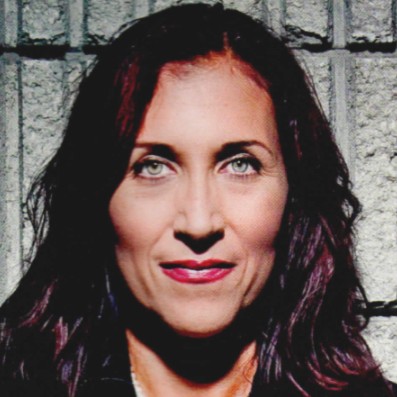 “As part of this newsroom leader accountability initiative, the task force is inviting a dozen top editors at some of the country’s major news organizations to meet and discuss their hiring record, the demographics of their investigative units, and to learn about efforts underway to ensure their investigative ranks reflect the changing demographics across the country. . . .”
“As part of this newsroom leader accountability initiative, the task force is inviting a dozen top editors at some of the country’s major news organizations to meet and discuss their hiring record, the demographics of their investigative units, and to learn about efforts underway to ensure their investigative ranks reflect the changing demographics across the country. . . .”
Joining NAHJ will be the Asian American Journalists Association, the National Association of Black Journalists and the Native American Journalists Association, but “The NAHJ invites other journalism allies to join us in this ongoing effort.”
NAHJ’s Investigative and Data Journalism Task Force is chaired by General At-Large Officer Mc Nelly Torres (pictured), an investigative journalist and editor at the Center for Public integrity.
Uganda’s Vanessa Nakate, in Glasgow, Scotland, for the COP26 climate conference, says of the climate crisis, “Globally, we are ignoring the people who are most affected by it. And because of that, so many people in the global south (a term referring to the more southerly, lower-income countries that are often most affected by the climate crisis) have lost hope.” She is on the cover of the Nov. 8-15 issue of Time magazine. Credit: YouTube)
Western Media Dominate COP26 Press Contingent
At the COP26 climate summit in Glasgow, Scotland, concluding Friday, “the conference handed out nearly two thousand physical media badges in the first week,” Jon Allsop wrote from the conference Tuesday for Columbia Journalism Review. “I asked the press office if it could provide a list of media participants or a breakdown of the above numbers by country or region, but it said that it was ‘not in a position’ to do so.
“I’ve spent the days since then trying to figure out who is represented among the media at COP, and who is not. In the absence of official data, that hasn’t been an easy task — but it’s become increasingly clear that numerous Western outlets have more journalists here than many entire countries, sometimes significantly so.
“Access and exclusion have been huge stories at COP26 — some of the countries most immediately threatened by the climate crisis were unable to send their leaders, never mind activists and concerned citizens — for reasons ranging from cost to COVID to both. There are excellent journalists from the Global South on the ground here (indeed, I featured some of their work in my dispatch for CJR on Tuesday) and many more covering COP remotely; many Western journalists, meanwhile, have shone a spotlight on very vulnerable countries, both in their coverage and during live events such as those at the Climate Hub.
“Still, as far as physical representation goes, media is very clearly part of the broader, highly unequal trend. . . .”
- Jon Allsop, Columbia Journalism Review: CJR at COP26: A fellowship centers journalists from the Global South
- Stephanie Guerilus, The Grio: The Weather Channel’s Paul Goodloe says Black people ‘need to have a seat at the table’ at COP26
- Mia Mottley, YouTube: Prime Minister of Barbados at the Opening of the #COP26 World Leaders Summit (video)
- Katie Worth, “Frontline,” PBS: Miseducation: A Roundtable Discussion on How Climate Change Is Taught in America (Discussion is Nov. 15)
. . . China Threatening African Livelihoods
Chinese expansion in Africa is “really threatening not just climate change but the livelihoods of millions of Africans,” according to Nnimmo Bassey (pictured), a Nigerian environmental activist, poet, author and director of the Health of Mother Earth Foundation.
 Bassey, who appeared Wednesday from COP26 on “Democracy Now!” also said “the impacts of global warming on the continent of Africa [are] enormous.”
Bassey, who appeared Wednesday from COP26 on “Democracy Now!” also said “the impacts of global warming on the continent of Africa [are] enormous.”
Bassey told host Amy Goodman, “China is about running Africa, driving deforestation in the continent, investing in fossil fuel facilities development, the exploitation pipeline, for example. They’re investing in a pipeline that would take oil from — very waxy oil from Uganda to a seaport in Tanzania for export. And this is something that’s really threatening not just climate change but the livelihoods of millions of Africans who live in the Rift Valley and who depend on freshwater system from the Lake Victoria basin in East Africa.
“So, right across the continent, the influence of China and the investment in fossil industry development on the continent is a big problem in terms of global warming, in terms of livelihoods and in terms of local economies, because right on that continent, I would say, the total workforce of the continent, only — out of the total workforce, only less than a percentage, 1%, of Africans are working in that sector. So it doesn’t in any way multiply or adapt to the local economies. It’s just another way of — another wave of exploitation. And that’s what China is driving on the continent.
“Russia is only driving, pushing old technology for nuclear power in some places on the continent. And I believe that they ought to have been on the table. They should have faced the nations that they are — in which the Russians are taking action that is compounding the crisis, and not stay away, and just send delegates to come here and talk to the rest of the people.”
Goodman replied, “as we wrap up, number one, can you describe the real effects of the climate emergency on the continent of Africa? And, two, what gives you hope? When we see you every year at the climate summits — we’ve been together from Copenhagen on — you’ve been arrested at protests, yet you keep going. What gives you hope?”
Bassey answered, “Well, the impacts of global warming on the continent of Africa [are] enormous. One thing is that Africa is right at the center of the world, have their large chunk of the continent right on the Equator, so the temperature impact on the continent is far above the global average. So, global averages, personally, are very threatening to me and to others on the continent.
“Now, again, the continent is surrounded by water bodies. So there’s serious sea level rise impact, has been predicted by the IPCC to have higher levels of impact, apart from the Pacific island states, on the continent. Already a place like Nigeria is losing about two meters every year to coastal erosion due to sea level rise. And this is having grave impact already on communities, on infrastructure, and it’s a big problem. . . .”
- Comfort Ero, Patrick Smith and Nick Westcott, African Arguments: Africa and COP26: What way forward? (Sept. 13)
- Linsey Davis with Vanessa Nakate:, ABC News: Climate activist: ‘We cannot adapt to lost traditions and culture’ (video)
- Vanessa Nakate, CNN: You can’t crop an entire continent out of the fight against climate crisis
- Ari Shapiro, Noah Caldwell, Ashley Brown, Mia Venkat, NPR: Uganda’s Vanessa Nakate says COP26 sidelines nations most affected by climate change
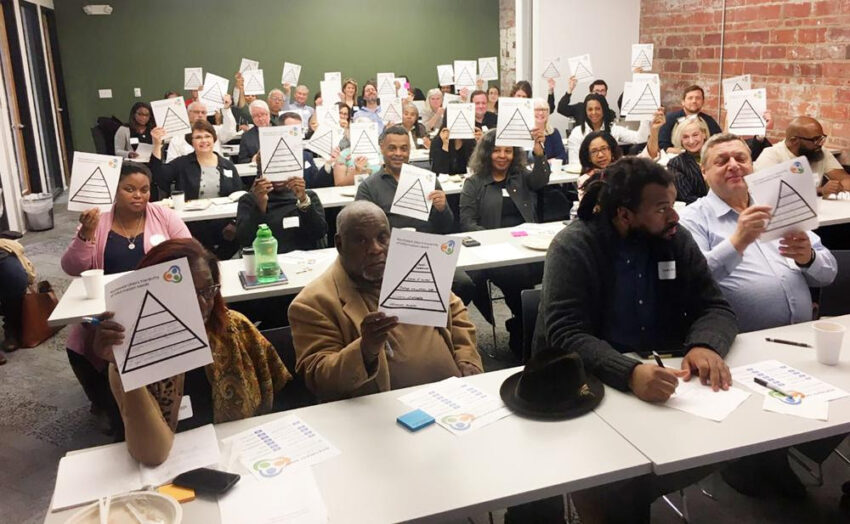
Nonprofit Newsroom Planned in Cleveland, Hiring 25
“A coalition of philanthropies announced plans Tuesday to launch a nonprofit newsroom that will provide coverage of Cleveland, kicking off an effort to help fill a void left by the shrinking of news organizations in Ohio,” Haleluya Hadero reported Tuesday for the Associated Press.
“The donors say theirs will be one of the largest local nonprofit news startups in the country. The American Journalism Project, one of the funders, has launched three other nonprofit newsroom startups and supported 26 others across the country.
“A broader effort, called the Ohio Local News Initiative, is set to establish a network of nonprofit newsrooms across the state that would share a back-office infrastructure, with each community having a newsroom to serve local needs, said Sarabeth Berman, CEO of the American Journalism Project. . . .
” Berman says the journalism project is in talks to expand the initiative to other parts of the state and expects a flow of further donations. The newsroom in Cleveland is expected to hire 25 staffers to launch by mid-2022. . . .”
Prison Staff Shortages Leave Stabbings Undetected
 “A prisoner at a Philadelphia jail was repeatedly stabbed in an attack by three men on a cellblock with no guard nearby, leaving him to stagger back into his cell as no one came to his aid,” Samantha Melamed and Dylan Purcell reported Nov. 4 for The Philadelphia Inquirer. “The Sept. 30 incident, captured on surveillance video obtained by The Inquirer, went undetected after other prisoners rushed over to mop up the blood.
“A prisoner at a Philadelphia jail was repeatedly stabbed in an attack by three men on a cellblock with no guard nearby, leaving him to stagger back into his cell as no one came to his aid,” Samantha Melamed and Dylan Purcell reported Nov. 4 for The Philadelphia Inquirer. “The Sept. 30 incident, captured on surveillance video obtained by The Inquirer, went undetected after other prisoners rushed over to mop up the blood.
“Corrections officers and prisoners said the situation was a consequence of intensifying staff shortages at the Philadelphia Department of Prisons, where violence has been simmering among men who spend 21 hours a day locked in their cells.
“An Inquirer analysis of a week’s worth of recent staffing rosters revealed that 20% to 30% of shifts on a given day were filled by officers and supervisors working overtime. Many officers put in 16-hour or even 22-hour workdays. . . .”
(Photo: Curran-Fromhold Correctional Facility in Northeast Philadelphia; Credit: Tim Tai/Philadelphia Inquirer)
Reporters Verify Killing of 1,000 in El Salvador
“On Dec. 10, 1981, an American-trained unit of the Salvadoran army stormed into a remote village near the country’s border with Honduras,” Nelson Rauda reported Tuesday for ProPublica, Retro Report and PBS’ “Frontline.”
“In the days that followed, the soldiers killed nearly 1,000 civilians, most of them women and children. Raymond Bonner, a ProPublica and Retro Report contributor who was then working for The New York Times, traveled with photographer Susan Meiselas through rebel-held territory to report on the massacre.
“Their story about the atrocities and a similar account by The Washington Post’s Alma Guillermoprieto were fiercely attacked by the Reagan administration, which viewed El Salvador’s military as an essential ally in the fight against the country’s leftist rebels. Administration officials insisted El Mozote had been the site of a firefight between the army and rebels.
“After the war finally ended in January 1992, investigators began to dig up the bodies. Of the more than 140 remains first exhumed, more than 95% were children; the average age was 6 years old. Many had been rounded up and locked in a convent, then killed in a fusillade of fire before the building was burned. The reporters had been right all along.
“Four decades after he filed his first story on El Mozote, Bonner returned to El Salvador and teamed up with Nelson Rauda, a reporter with the independent news outlet El Faro, to track the country’s faltering efforts to hold the perpetrators accountable.
“The key to that inquiry was a Salvadoran judge who heard testimony from victims, families and some of the military officers involved.
“Taken together, the evidence indicated that the El Mozote attack was part of a pattern set by El Salvador’s military and political leadership. Bonner and Rauda’s reporting is traced in a documentary . . . produced by the nonprofit news organization Retro Report and the PBS program FRONTLINE. (Check your local schedules for airtimes.)
” The following story, by Rauda, details the personal costs of doing this work in a country whose populist president has handcuffed the judiciary and publicly attacked journalists who challenge the official line. . . .”
Short Takes
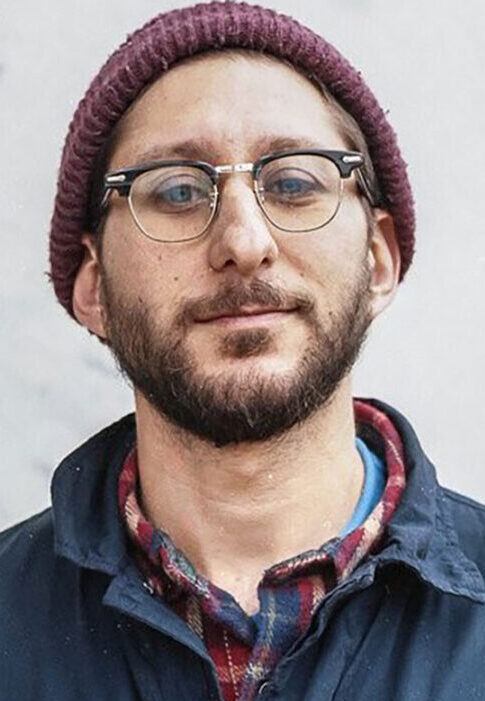 “A court in military-ruled Myanmar on Friday sentenced detained U.S. journalist Danny Fenster (pictured) to 11 years in prison with hard labor after finding him guilty on several charges, including incitement for allegedly spreading false or inflammatory information,” Grant Peck reported for The Associated Press. “Fenster, the managing editor of the online magazine Frontier Myanmar, was also found guilty of contacting illegal organizations and violating visa regulations, lawyer Than Zaw Aung said. He was sentenced to the maximum term on each charge and ordered to pay a 100,000 kyat ($56) fine. . . . He is the only foreign journalist to be convicted of a serious offense since the army seized power in February, ousting the elected government of Aung San Suu Kyi. . . .”
“A court in military-ruled Myanmar on Friday sentenced detained U.S. journalist Danny Fenster (pictured) to 11 years in prison with hard labor after finding him guilty on several charges, including incitement for allegedly spreading false or inflammatory information,” Grant Peck reported for The Associated Press. “Fenster, the managing editor of the online magazine Frontier Myanmar, was also found guilty of contacting illegal organizations and violating visa regulations, lawyer Than Zaw Aung said. He was sentenced to the maximum term on each charge and ordered to pay a 100,000 kyat ($56) fine. . . . He is the only foreign journalist to be convicted of a serious offense since the army seized power in February, ousting the elected government of Aung San Suu Kyi. . . .”
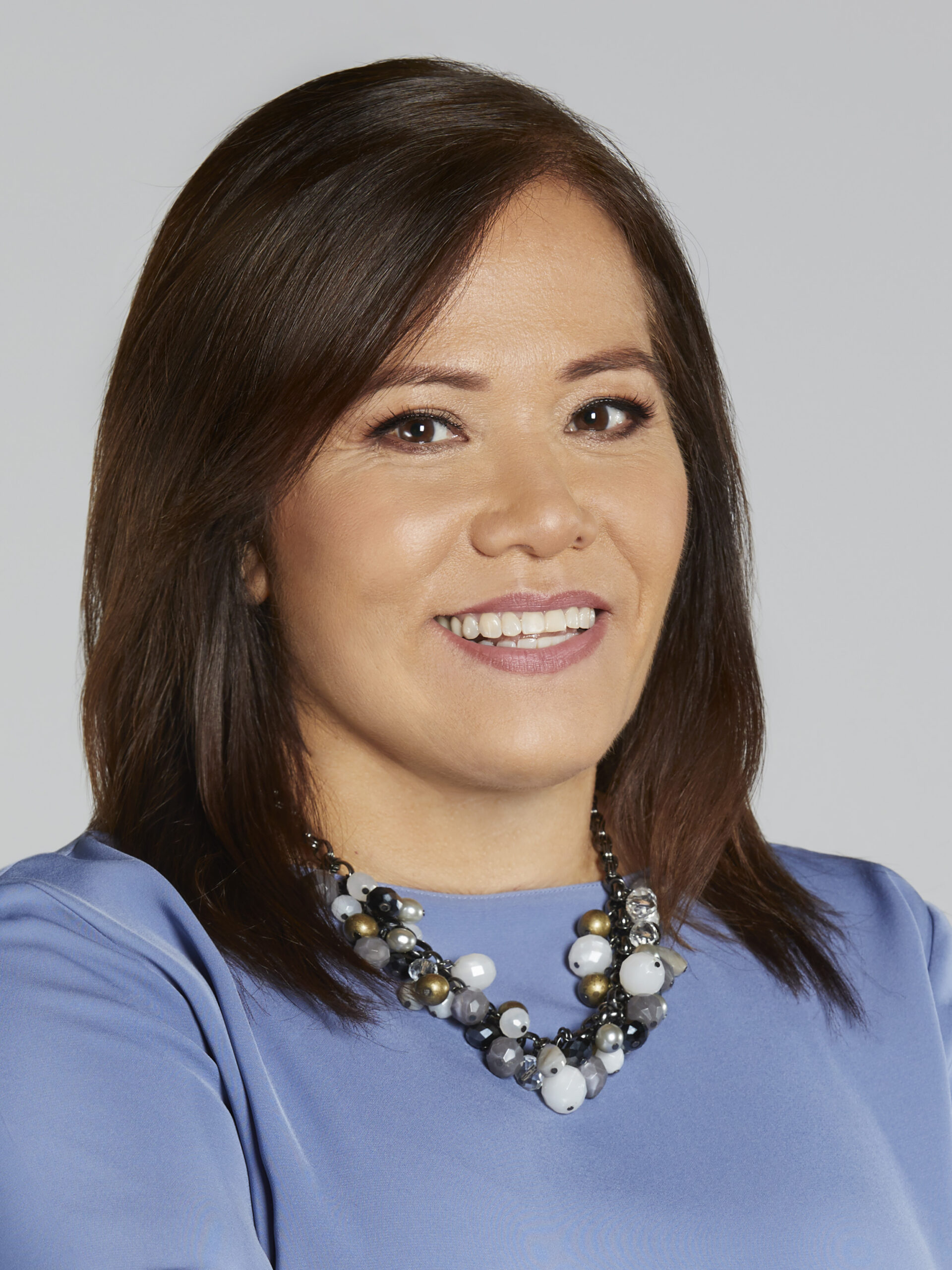 “Luis Fernández, who has been president of Telemundo’s news division since 2015, will retire at the end of the year, with Patsy Loris (pictured), currently the division’s executive vp, set to replace him beginning Jan. 1,” Alex Weprin reported Thursday for The Hollywood Reporter.
“Luis Fernández, who has been president of Telemundo’s news division since 2015, will retire at the end of the year, with Patsy Loris (pictured), currently the division’s executive vp, set to replace him beginning Jan. 1,” Alex Weprin reported Thursday for The Hollywood Reporter.
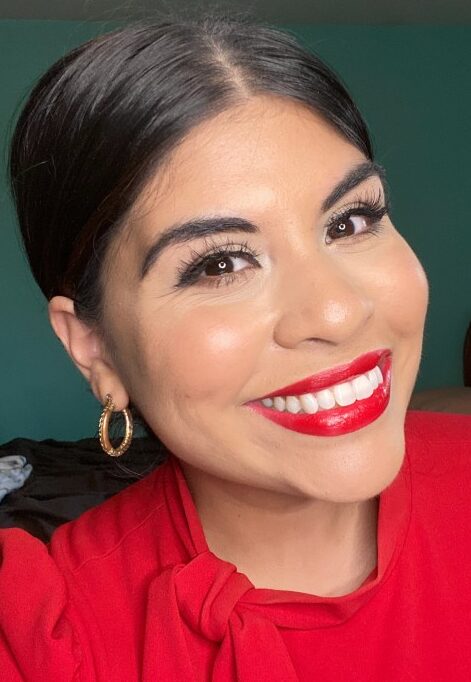 “A former 9NEWS anchor filed a federal discrimination lawsuit against the Denver news station and its parent company Thursday, and is seeking a jury trial after the station let her go following her recovery from a stroke,” Elizabeth Hernandez reported Thursday for the Denver Post. “Kristen Aguirre (pictured), one of three Latina journalists who spoke to The Denver Post in April about alleged racial and disability-related discrimination she experienced at 9NEWS, filed the lawsuit Thursday in federal district court for the District of Colorado. . . .”
“A former 9NEWS anchor filed a federal discrimination lawsuit against the Denver news station and its parent company Thursday, and is seeking a jury trial after the station let her go following her recovery from a stroke,” Elizabeth Hernandez reported Thursday for the Denver Post. “Kristen Aguirre (pictured), one of three Latina journalists who spoke to The Denver Post in April about alleged racial and disability-related discrimination she experienced at 9NEWS, filed the lawsuit Thursday in federal district court for the District of Colorado. . . .”
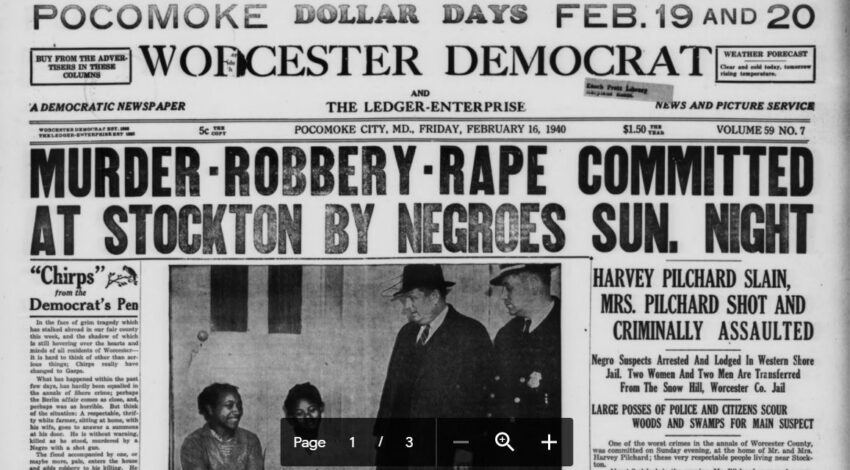
- “The Maryland-Delaware-D.C. Press Association has removed Edward J. Clarke, the late editor and owner of the Worcester [Md.] Democrat, from its Hall of Fame after a review of his published work revealed vile commentary, extreme racism and the promotion of lynching,” the association announced Wednesday. “Clarke was editor and owner of the Worcester Democrat, which existed from 1921 to 1953. His personal writing and his newspaper’s coverage of a 1940 murder and assault case in Pocomoke City, Md., contained horrible, angry rants and racial attacks targeting three Black men — George B. Selby, Arthur Collick and Charles Manuel — in connection with the death of farmer Harvey Pilchard, who was white, and assault of his wife, Annie Pilchard, who also was white. . . .”
- “For 17 minutes, Belton [Mo.] police made every Black man in Cass County a suspect in a shooting,” the Kansas City Star editorialized Oct. 28. “The initial description from police officials on Monday read: ‘The suspect is described as a black male who left the scene in an unknown vehicle.’ Less than 20 minutes later, additional details were released, but the damage had already been done. Identifying an entire group of people based on generic information is wrong. . . . “
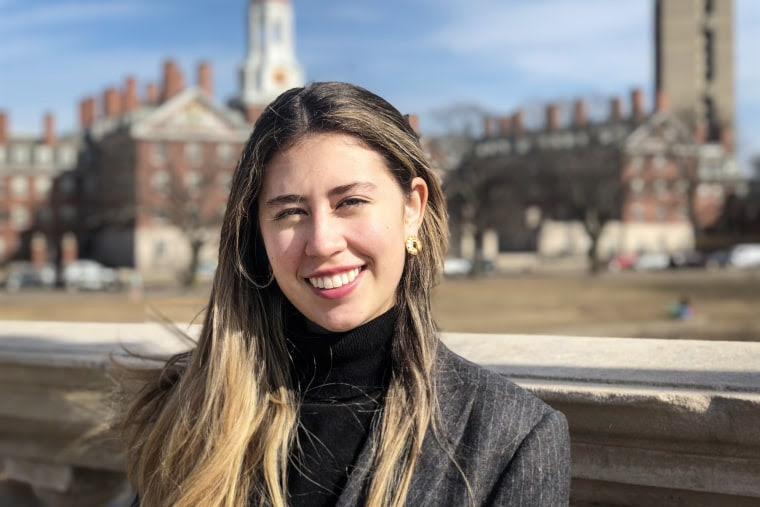
- “The Harvard Crimson, the nation’s oldest college newspaper, is getting ready to welcome its first Hispanic president in its nearly 150-year history,” Nicole Acevedo reported Friday for NBC News. “Raquel Coronell Uribe (pictured), a student majoring in history and literature, will assume the leadership role starting in January. “I’m really honored to be the first Latinx president, but we have to make sure that doesn’t mean that I’m the last,” Coronell Uribe told NBC News.”I really want to make sure that this door remains open for other people.” Harvard Crimson story
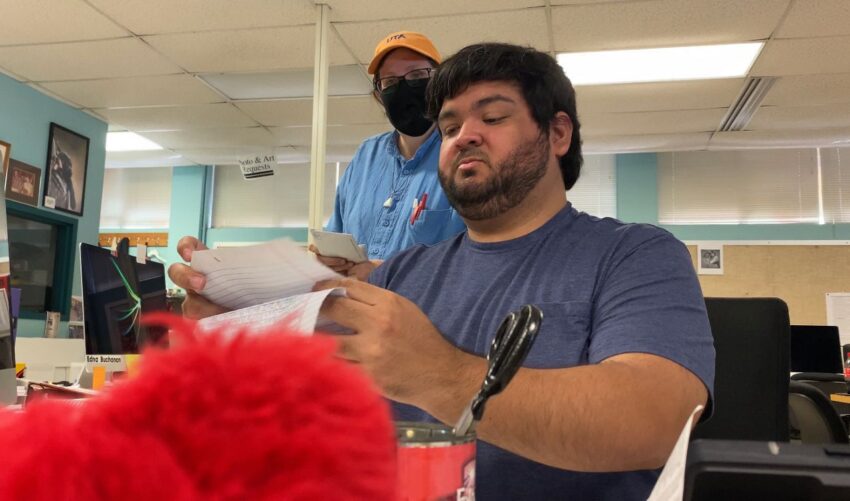
- The reporting by student editor Sergio Medina that San Antonio College planned to close his student newspaper, The Ranger, is being credited with saving the 95-year-old publication. Administrators “later said they would work to ‘reimagine’ the Ranger,” Ranger alumnus Matthew Reyna wrote Friday for the San Antonio Express-News.. [The school’s] status as a local landmark in our community makes it feel like a small university rather than a community college. The existence of a hard-hitting and widely distributed student newspaper cemented that connection for me as a student.” The Express-News editorial board congratulated Medina as well on Oct. 15.
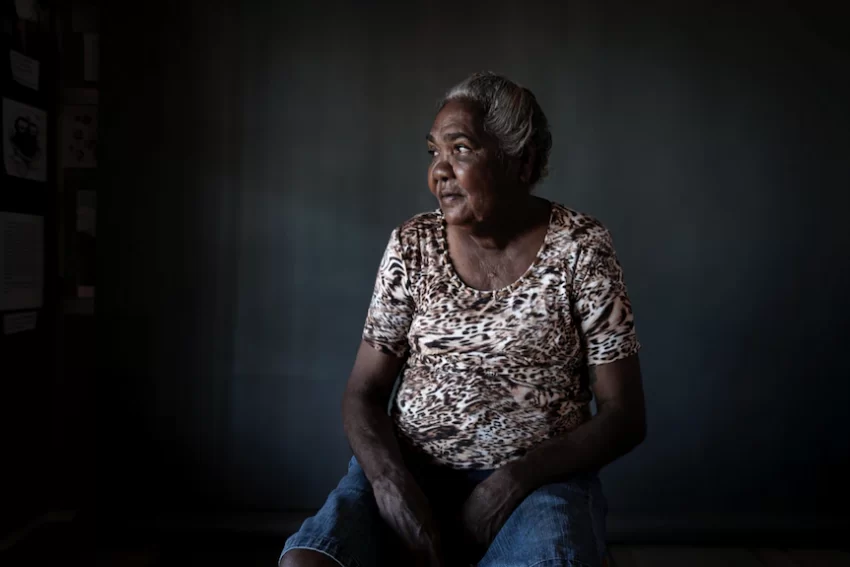
- “Striking portraits of Australian First Nations stock women who spent most of their working lives on cattle stations in far-north Queensland have won one of the world’s most prestigious photography prizes,” Nadia Khomami wrote Monday for the Guardian. “The National Portrait Gallery on Monday named a Sydney-based photographer, David Prichard, as the winner of the 2021 Taylor Wessing Photographic Portrait Prize for his series, Tribute to Indigenous Stock Women. He wins £15,000 [about $20,000 U.S.]. Stock women’s labour typically involves a range of duties, from cooking and other homestead chores to maintaining the welfare of the livestock, often on horseback. . . .”
- The Denver Post, which has not participated in industry newsroom diversity surveys in recent years, will resume asking its employees how they identify “in the near future and make those numbers public,” Lee Ann Colacioppo, editor of the Post, messaged Journal-isms. Board members of the National Association of Black Journalists visited Denver media outlets on Oct. 29 and reported on those visits at their meeting the next day.
- “The Justice Department and the Securities and Exchange Commission have opened investigations into the embattled Silicon Valley company Ozy Media, according to people with knowledge of the matter,” Ben Smith and Ben Protess reported Wednesday for The New York TImes. They also wrote, “Ozy Media said on Oct. 1 that it was shutting down, shortly after The Times reported that someone at the company had apparently impersonated a YouTube executive during a conference call with Goldman Sachs, which was considering an investment. . . . Ozy has taken steps toward a return.”
 “Longtime Detroit anchor Huel Perkins (pictured) is expected to retire,” Allan Lengel reported Oct. 5 for Deadline Detroit. Perkins, 67, who since 1989 has been with WJBK, which markets itself as Fox 2, “is expected to exit around March, a source familiar with the situation tells Deadline Detroit. Perkins says there’s no firm date yet. He said his decision to do so sooner than later came after the recent death of close friend Steve Hood, a political consultant and TV and radio personality, and learning of a grave illness impacting another close friend. . . .”
“Longtime Detroit anchor Huel Perkins (pictured) is expected to retire,” Allan Lengel reported Oct. 5 for Deadline Detroit. Perkins, 67, who since 1989 has been with WJBK, which markets itself as Fox 2, “is expected to exit around March, a source familiar with the situation tells Deadline Detroit. Perkins says there’s no firm date yet. He said his decision to do so sooner than later came after the recent death of close friend Steve Hood, a political consultant and TV and radio personality, and learning of a grave illness impacting another close friend. . . .”
- The Knight Foundation still intends to fund, and the University of North Carolina – Chapel Hill intends to fill, the chair on race and investigative journalism that Nikole Hannah-Jones declined in July, Rick Edmunds reported Tuesday for the Poynter Institute. Knight is separately funding a new chair for Hannah-Jones at Howard University.
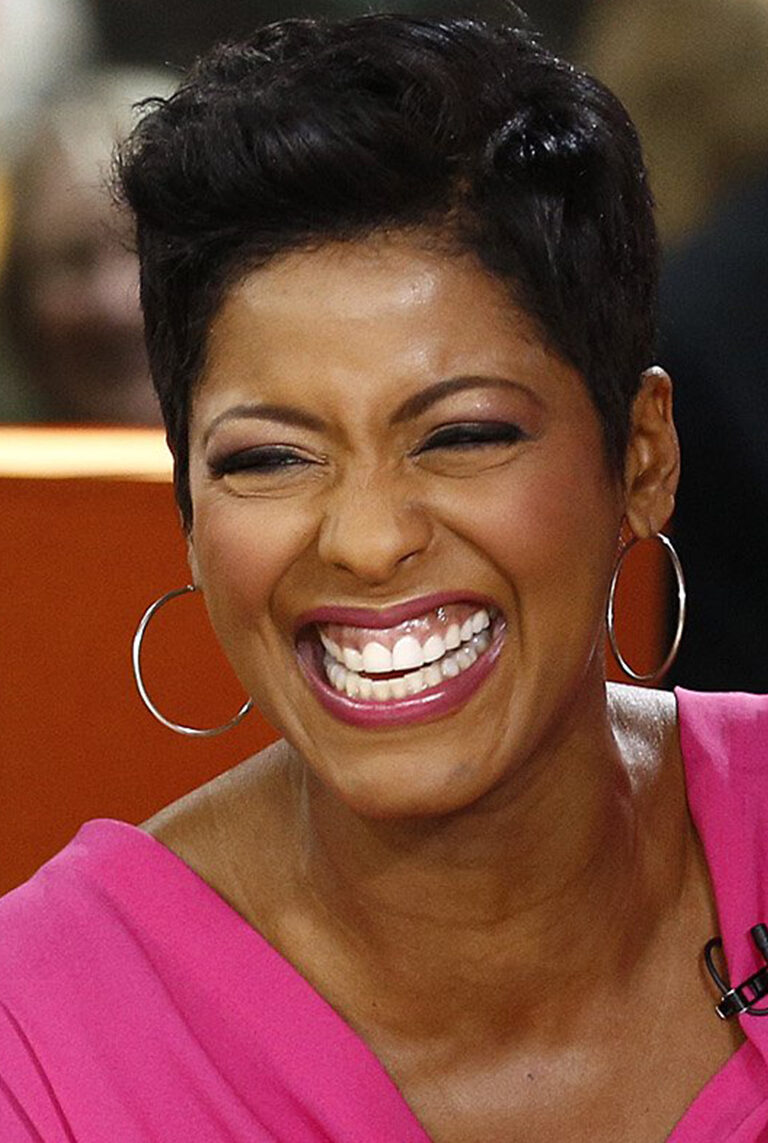 “ABC News president Kim Godwin kicked off the week by announcing that the network has renewed Tamron Hall (pictured) for a fourth (2022-2023) and fifth (2023-2024) season,” A.J. Katz reported Monday for TV Newser. “The ABC Owned stations carrying the Disney-ABC syndicated daytime TV show are WABC-TV New York, KABC-TV Los Angeles, WLS-TV Chicago, WPVI-TV Philadelphia, KGO-TV San Francisco, KTRK-TV Houston, WTVD-TV Raleigh-Durham and KFSN-TV Fresno. . . .”
“ABC News president Kim Godwin kicked off the week by announcing that the network has renewed Tamron Hall (pictured) for a fourth (2022-2023) and fifth (2023-2024) season,” A.J. Katz reported Monday for TV Newser. “The ABC Owned stations carrying the Disney-ABC syndicated daytime TV show are WABC-TV New York, KABC-TV Los Angeles, WLS-TV Chicago, WPVI-TV Philadelphia, KGO-TV San Francisco, KTRK-TV Houston, WTVD-TV Raleigh-Durham and KFSN-TV Fresno. . . .”
- “RTDNA’s ongoing effort to ensure all Americans, including all journalists, have an unambiguous right lawfully to record the activity of police moves to a new phase today,” Executive Director Dan Shelley wrote Monday for the Radio Television Digital News Association. Under the headline “US Supreme Court Leaves Your Right to Record Police In Jeopardy,” Shelley continued, “The U.S. Supreme Court ‘without explanation’ announced November 1 it will not hear Frasier v. Evans, et al., a case from the 10th U.S. Circuit Court of Appeals in Denver that could have resolved the issue once and for all. In response, our advocacy efforts will return to winning support on Capitol Hill for federal legislation and explaining to the public why it would benefit from such clarity. . . .”
- “Don Lemon’s attorney is going for Megyn Kelly’s jugular, calling out the conservative host for her ‘lopsided’ and ‘reckless’ journalistic ethics.” Whitney Vasquez reported Tuesday for Radar. “This comes after Megyn invited Lemon’s accuser as a guest on her SiriusXM show, where he freely talked about an alleged assault involving the CNN host. . . . “
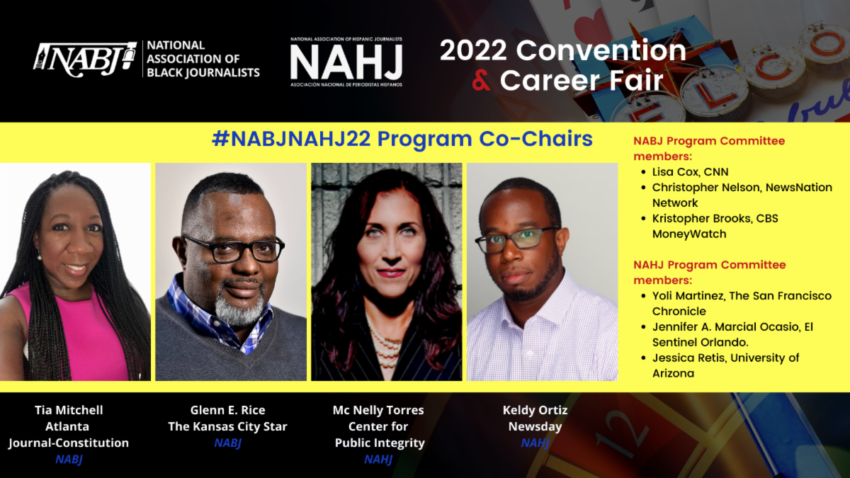
- The National Association of Black Journalists and the National Association of Hispanic Journalists announced the selection of the program chairs and committee members for the joint 2022 Convention & Career Fair. “The #NABJNAHJ22 Convention is scheduled to be held August 3-7, 2022 in Las Vegas, pending health guidelines. . . .”
- A new serial from the Reveal reporting package from the Center for Investigative Reporting, “Mississippi Goddam: The Ballad of Billey Joe,” examines “the suspicious death of Billey Joe Johnson, a Black teenager who died during an early-morning traffic stop by a White cop in rural Mississippi. . . . This story is about more than Billey Joe, it’s about how the justice system failed every step of the way. It’s about race, policing, the South and unspoken secrets,” the center says in a promotional email.
- In Fresno, Calif., the Central Valley Journalists of Color program “seeks to equip people of color with journalism skills, funding their education through program sponsorships in an effort to increase diversity in local newsrooms,” Breanna Hardy wrote Thursday for the Business Journal in Fresno. The effort, from The kNOw Youth Media, Fresno State and Fresno City College, “takes a maximum of eight students a year as a cohort to educate on types of stories to write, grammar, style and photography.” On Oct. 27, Microsoft contributed $20,000 to the program.
- Media entrepreneur Byron Allen has raised $10 billion in preferred equity and debt for his bid for U.S. regional TV station operator Tegna Inc . . . hoping to prevail over a rival offer from investment firms Apollo Global Management Inc. . . . and Standard General LP, people familiar with the matter said,” Helen Coster and Krystal Hu reported Nov. 5 for Reuters.
- . . . Byron Allen, who is building a minority-owned media empire, called on the board of directors of McDonald’s to fire its CEO, Chris Kempczinski, citing a racist culture at the fast-food burger chain,” Jon Lafayette reported Nov. 6 for Broadcasting & Cable. “In the most recent incident, Kempczinski sent a text message to Chicago Mayor Lori Lightfoot about the shooting deaths of two children in the city. In the text message, he said the parents had ‘failed those kids.’ . . “
 “Jay Williams (pictured) doesn’t like being put in a box,” Tyler Falk reported Tuesday for Current.org. “The former NBA player turned ESPN commentator isn’t just a sports guy. He was captain of his high-school chess team, started a consulting firm and, in January, will be host of a new NPR podcast, The Limits with Jay Williams.”
“Jay Williams (pictured) doesn’t like being put in a box,” Tyler Falk reported Tuesday for Current.org. “The former NBA player turned ESPN commentator isn’t just a sports guy. He was captain of his high-school chess team, started a consulting firm and, in January, will be host of a new NPR podcast, The Limits with Jay Williams.”
- “NBCUniversal’s cable sports network NBCSN will officially be no more on Dec 31,” Mollie Cahillane reported Nov. 2 for TVNewser. “In January, the company first announced plans to shutter the cable network later this year in an effort to bolster USA Network, which has been shifting away from scripted series and focusing on more sports and reality programming. . . .”
 “Last month, Vox.com eliminated its Identities section, which covered a range of topics, including criminal justice, race, religion, gender, and drugs,” Hanaa’ Tameez wrote Monday for Nieman Lab. She also wrote, “I reached out to Vox’s editor-in-chief of six months, Swati Sharma (pictured), and she told me that eliminating the section was actually part of refining Vox’s editorial strategy so that all of its stories across sections are told through an intersectional lens, rather than siloing race and identity-related stories under one catch-all section. . . . “
“Last month, Vox.com eliminated its Identities section, which covered a range of topics, including criminal justice, race, religion, gender, and drugs,” Hanaa’ Tameez wrote Monday for Nieman Lab. She also wrote, “I reached out to Vox’s editor-in-chief of six months, Swati Sharma (pictured), and she told me that eliminating the section was actually part of refining Vox’s editorial strategy so that all of its stories across sections are told through an intersectional lens, rather than siloing race and identity-related stories under one catch-all section. . . . “
 “As I lectured her about the many reasons to celebrate her natural hair, I caught a glimpse of my own in the rearview mirror, fried by chemicals until it was stick-straight,” Latoyia Edwards (pictured) wrote Nov. 4 in the Boston Globe, recounting a talk with her daughter. “She had to be wondering: Mom, if natural Black hair is so great, why do you anchor the news every day with a relaxer and hair extensions? . . . This year, I decided it was time — beyond time — to wear my hair the way it feels right to me. For me, that meant braids. Regardless of the style, it’s long past time for Black girls and women to feel empowered to wear their hair how they choose — and for society to embrace them. . . .”
“As I lectured her about the many reasons to celebrate her natural hair, I caught a glimpse of my own in the rearview mirror, fried by chemicals until it was stick-straight,” Latoyia Edwards (pictured) wrote Nov. 4 in the Boston Globe, recounting a talk with her daughter. “She had to be wondering: Mom, if natural Black hair is so great, why do you anchor the news every day with a relaxer and hair extensions? . . . This year, I decided it was time — beyond time — to wear my hair the way it feels right to me. For me, that meant braids. Regardless of the style, it’s long past time for Black girls and women to feel empowered to wear their hair how they choose — and for society to embrace them. . . .”
- “Revolt, the media company founded by Sean Combs, announced the launch of its first-ever digital streaming app,” Todd Spangler reported Monday for Variety. “The company calls the Revolt app a ‘one-stop shop’ for users to view exclusive new series, extended versions of Revolt’s original programming, bonus content, livestreamed events and more. . . .”
 Adaora Udoji (pictured) will join PBS as vice president of programming and operations, effective Nov. 15, Justin Anderson reported Nov. 3 for Real Screen. “Most recently, Udoji led a corporate innovation and venture program team at RLab, focusing on technologies like virtual reality, augmented reality, artificial intelligence and other emerging technologies. Prior to that, she ran News Deeply and worked in venture capital. As a journalist, Udoji has covered major events like the Iraq War and Hurricane Katrina for outlets like ABC News and CNN. . . .”
Adaora Udoji (pictured) will join PBS as vice president of programming and operations, effective Nov. 15, Justin Anderson reported Nov. 3 for Real Screen. “Most recently, Udoji led a corporate innovation and venture program team at RLab, focusing on technologies like virtual reality, augmented reality, artificial intelligence and other emerging technologies. Prior to that, she ran News Deeply and worked in venture capital. As a journalist, Udoji has covered major events like the Iraq War and Hurricane Katrina for outlets like ABC News and CNN. . . .”
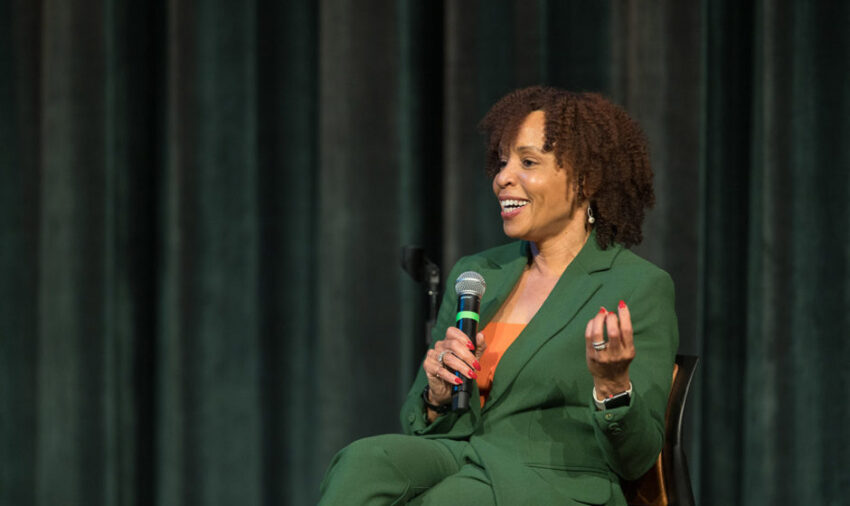
” ‘A big part of my story is trusting your journey,’ said Godwin, whose journalism career has led to nine relocations around the country. ‘Trust your journey and keep going. If you are moving, you are hard to stop; keep going; keeping growing; keep glowing. Something in motion is harder to stop.’ . . ” Godwin visited on Oct. 28. (Credit: AJ Shorter)
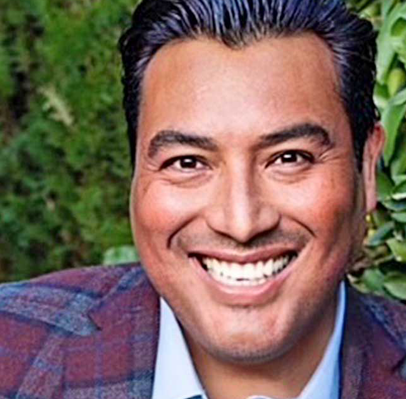 “Until recently, Alberto B. Mendoza (pictured) hated 41,” Christiana Lilly wrote Nov. 4 for the Georgia Voice, referring to the former executive director of the National Association of Hispanic Journalists, now managing editor of the JSK Journalism Fellowships at Stanford University. “He cringed if his dinner bill or hotel room number had the number in it, and with the countdown to his 41st birthday, he dreaded the year to come. His hatred of the number started when he was a kid. Growing up on the San Diego-Tijuana border, he was excited when some friends nicknamed him 41. That is, until his father told him what it meant. When he heard them, he called me into the garage and said, ˜Why did they call you that? They’re calling you a faggot, are you a faggot?’ Mendoza recalled. ‘I just remember wanting to disappear and crawl into a hole.’ . . . “
“Until recently, Alberto B. Mendoza (pictured) hated 41,” Christiana Lilly wrote Nov. 4 for the Georgia Voice, referring to the former executive director of the National Association of Hispanic Journalists, now managing editor of the JSK Journalism Fellowships at Stanford University. “He cringed if his dinner bill or hotel room number had the number in it, and with the countdown to his 41st birthday, he dreaded the year to come. His hatred of the number started when he was a kid. Growing up on the San Diego-Tijuana border, he was excited when some friends nicknamed him 41. That is, until his father told him what it meant. When he heard them, he called me into the garage and said, ˜Why did they call you that? They’re calling you a faggot, are you a faggot?’ Mendoza recalled. ‘I just remember wanting to disappear and crawl into a hole.’ . . . “
I had the privilege of documenting Pakistani communities in the U.S.
It’s important to tell our stories, especially when they are so unique and inspiring.
Two more episodes to follow showcasing Pakistanis in two other states. Can you guess which ones? https://t.co/3zB5OwqcoR
— Tabish Talib (@tabish_talib) October 4, 2021
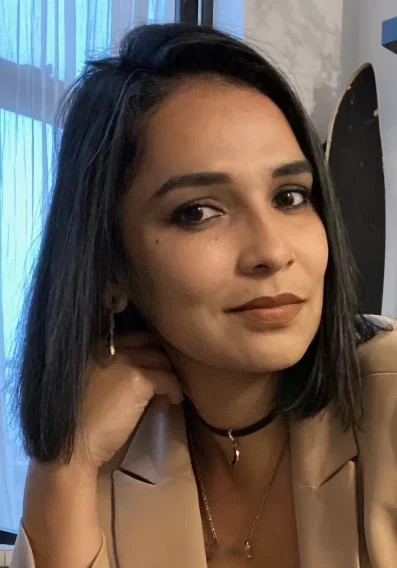 “Jazmin Aguilera (pictured) will be joining the Los Angeles Times in the role of head of audio,” the Los Angeles Times announced on Thursday. “Most recently, Aguilera hosted and produced ‘The Cut’ at New York Magazine, where she created unique yet relatable episodes on pandemic weight gain, post-vaccination debauchery and the transferable life skills in professional poker,” Managing Editor Shani Hilton wrote. “Before that, she worked as interim executive and senior producer at Conde Nast, developing, producing and scoring podcasts for magazines including Vogue and Pitchfork. . . .”
“Jazmin Aguilera (pictured) will be joining the Los Angeles Times in the role of head of audio,” the Los Angeles Times announced on Thursday. “Most recently, Aguilera hosted and produced ‘The Cut’ at New York Magazine, where she created unique yet relatable episodes on pandemic weight gain, post-vaccination debauchery and the transferable life skills in professional poker,” Managing Editor Shani Hilton wrote. “Before that, she worked as interim executive and senior producer at Conde Nast, developing, producing and scoring podcasts for magazines including Vogue and Pitchfork. . . .”
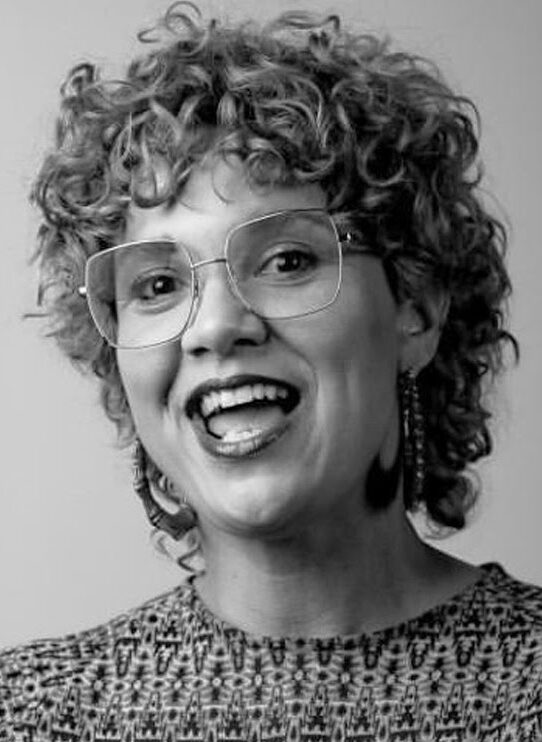 Crystal Good “spent years building a career as a poet, performer, and lobbyist in her home state of West Virginia,” Amanda Page wrote Wednesday for Yes magazine. . . . Good is founder and publisher of Black By God: The West Virginian.” Good told Journal-isms last month by telephone, “We don’t even have a Black reporter in this state . . .only three Black reporters in the West Virginia Press Association.” In September, Good joined demonstrators outside the houseboat of Sen. Joe Manchin, D-W.Va., protesting his opposition to Democrats’ multitrillion-dollar reconciliation package.
Crystal Good “spent years building a career as a poet, performer, and lobbyist in her home state of West Virginia,” Amanda Page wrote Wednesday for Yes magazine. . . . Good is founder and publisher of Black By God: The West Virginian.” Good told Journal-isms last month by telephone, “We don’t even have a Black reporter in this state . . .only three Black reporters in the West Virginia Press Association.” In September, Good joined demonstrators outside the houseboat of Sen. Joe Manchin, D-W.Va., protesting his opposition to Democrats’ multitrillion-dollar reconciliation package.
- “Here’s something you practically never see in federal court,” Jay Weaver wrote Thursday for the Miami Herald. “A Miami federal judge Wednesday ordered prosecutors to investigate whether dozens of news reporters — ”most from Spanish-language outlets — should be charged with contempt of court for publishing videos and photos of a notorious Colombian businessman [Alex Saab] dressed in prison garb and shackled during his first virtual court appearance last month. Under federal court rules, no one can make photos, videos or recordings of any proceedings ”in a live courtroom or during a Zoom session, which is how almost all hearings have been held during the COVID-19 pandemic.”
- Under the headline, “A Nigerian journalist took photos at the scene of killings his government denies. Then the harassment started,” Jonathan Rozen wrote Thursday for Nigeria’s Premium Times, “The photos showed blood-soaked concrete, a gashed open thigh, and an injured protester grimacing in pain on the ground. Taken by photojournalist Eti-Inyene Godwin Akpan on October 20, 2020, the images tell the story of Nigerian forces’ mass shooting of anti-police brutality protesters at Lagos’ Lekki Toll Gate, an incident the government continues to deny. . . .”
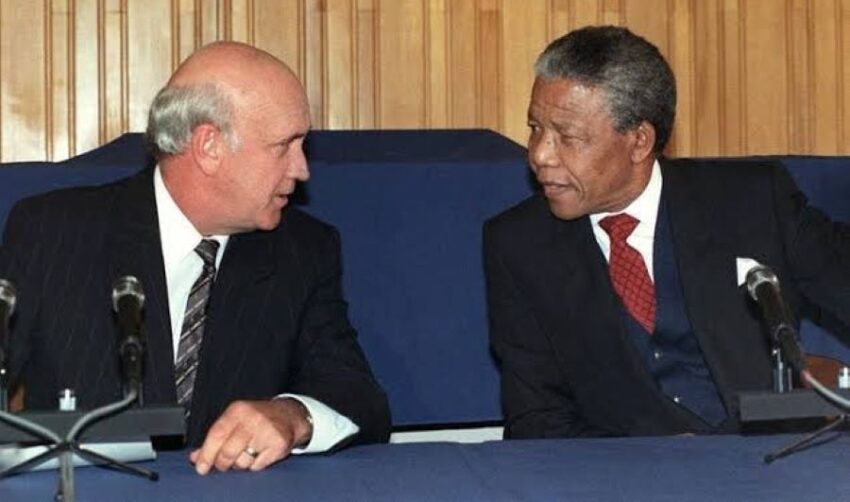
- “It often falls to Black journalists, historians, and storytellers to tell the whole truth and so we rise to that job today because the former president of South Africa, F.W. de Klerk, has died and some people would like to recall him as a hero,” Touré wrote Thursday for The Grio. He also wrote, “De Klerk was [Nelson] Mandela’s jailer as well as the virtual imprisoner of millions of South Africans, and the world put an economic gun to his head and said release Mandela and end this system or die. De Klerk made the only choice he could. He does not deserve an award for finally doing the right thing when he was forced to. He does not now deserve to be discussed as a hero or even a force for good. If there is justice in the afterworld, there should be a place waiting for him in hell.”
To subscribe at no cost, please send an email to journal-isms+subscribe@groups.io and say who you are.
Facebook users: “Like” “Richard Prince’s Journal-isms” on Facebook.
Follow Richard Prince on Twitter @princeeditor
Richard Prince’s Journal-isms originates from Washington. It began in print before most of us knew what the internet was, and it would like to be referred to as a “column.” Any views expressed in the column are those of the person or organization quoted and not those of any other entity. Send tips, comments and concerns to Richard Prince at journal-isms+owner@
View previous columns (after Feb. 13, 2016).
View previous columns (before Feb. 13, 2016)
-
- Diversity’s Greatest Hits, 2018 (Jan. 4, 2019)
- Book Notes: Is Taking a Knee Really All That? (Dec. 20, 2018)
- Book Notes: Challenging ’45’ and Proudly Telling the Story (Dec. 18, 2018)
- Book Notes: Get Down With the Legends! (Dec. 11, 2018)
- Journalist Richard Prince w/Joe Madison (Sirius XM, April 18, 2018) (podcast)
- Richard Prince (journalist) (Wikipedia entry)
- February 2018 Podcast: Richard “Dick” Prince on the need for newsroom diversity (Gabriel Greschler, Student Press Law Center, Feb. 26, 2018)
- Diversity’s Greatest Hits, 2017 — Where Will They Take Us in the Year Ahead?
- Book Notes: Best Sellers, Uncovered Treasures, Overlooked History (Dec. 19, 2017)
- An advocate for diversity in the media is still pressing for representation, (Courtland Milloy, Washington Post, Nov. 28, 2017)
- Morgan Global Journalism Review: Journal-isms Journeys On (Aug. 31, 2017)
- Diversity’s Greatest Hits, 2016
- Book Notes: 16 Writers Dish About ‘Chelle,’ the First Lady
- Book Notes: From Coretta to Barack, and in Search of the Godfather
- Journal-isms’ Richard Prince Wants Your Ideas (FishbowlDC, Feb. 26, 2016)
- “JOURNAL-ISMS” IS LATEST TO BEAR BRUNT OF INDUSTRY’S ECONOMIC WOES (Feb. 19, 2016)
- Richard Prince with Charlayne Hunter-Gault,“PBS NewsHour,” “What stagnant diversity means for America’s newsrooms” (Dec. 15, 2015)
- Book Notes: Journalists Follow Their Passions
- Book Notes: Journalists Who Rocked Their World
- Book Notes: Hands Up! Read This!
- Book Notes: New Cosby Bio Looks Like a Best-Seller
- Journo-diversity advocate turns attention to Ezra Klein project (Erik Wemple, Washington Post, March 5, 2014)
When you shop @AmazonSmile, Amazon will make a donation to Journal-Isms Inc. https://t.co/OFkE3Gu0eK
— Richard Prince (@princeeditor) March 16, 2018

